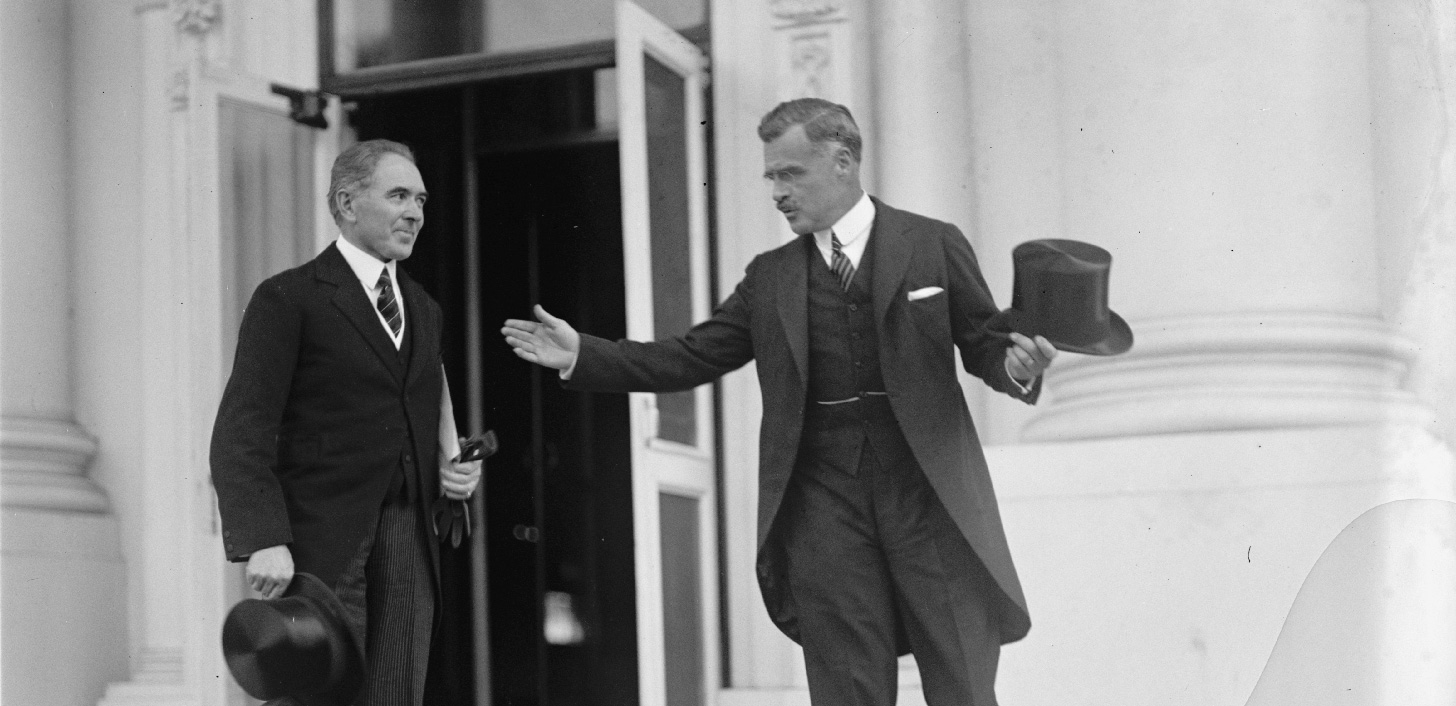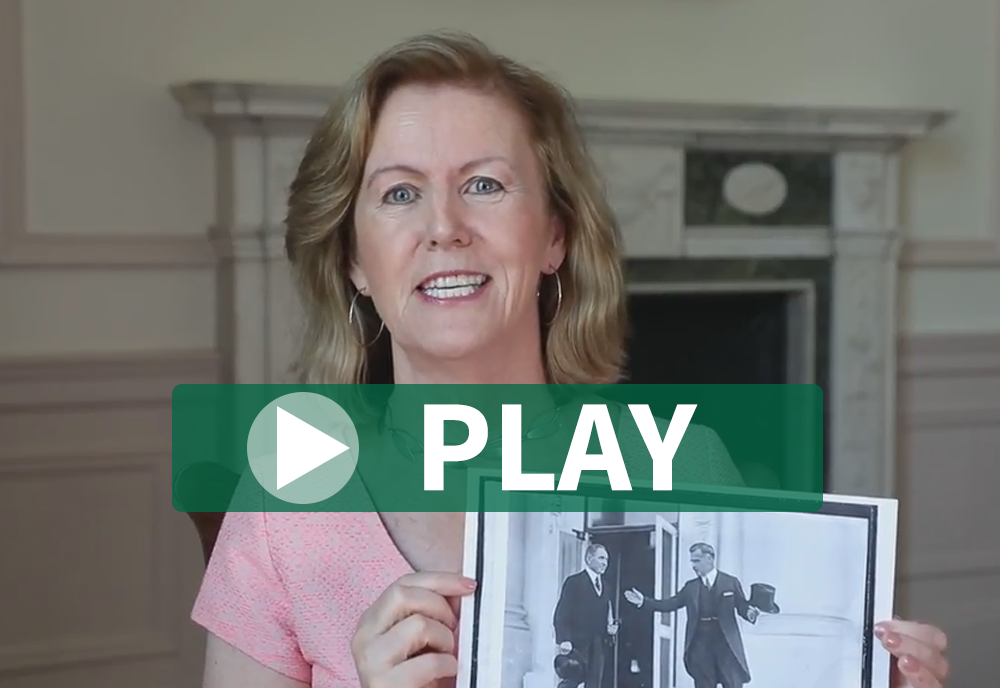1924
A tear in the fabric of Empire.
Ambassador Anderson discussing the opening of diplomatic relations with the US and the presentation of credentials by Timothy Smiddy.
The ceremony of presenting credentials is always freighted with significance – a kind of distillation of what diplomacy is about, as well as an important personal milestone for the incoming Ambassador.
But there is a hierarchy of significance.
The image beneath, taken on 7 October 1924, captures what was arguably the most consequential presentation of credentials in the history of Irish diplomacy.

This was the date Timothy Smiddy presented his credentials as Minister Plenipotentiary to US President Calvin Coolidge.
On the left is the sober, dignified Professor Smiddy; on the right Mr. Joshua Butler Wright, Assistant Secretary at the US State Department. From Mr. Wright’s balletic gesture of welcome, and the envelope tucked under Professor Smiddy’s left arm – presumably containing the credentials – one can infer that Smiddy was about to be ushered into the Oval Office.
What made this presentation of credentials so significant? The answer is two-fold: it represented a major increment of legitimacy for the Free State as a full international actor. And it created a precedent within the Commonwealth, blazing a trail that other dominions would follow.
By October 1924, Ireland already had two formally recognised overseas representatives, in London and in Geneva. But legally and diplomatically, neither carried the full independence of status of a Minister Plenipotentiary. And – although Canada was pressing its case in Washington – no member of the Commonwealth had achieved such status, in line with the accepted doctrine that dominions could not conduct their own foreign policy.
One wonders what tangle of emotions Smiddy was experiencing at just the moment of this picture. Was there a little trepidation mixed with the pride and triumph, alongside the awareness that he was striding into the history books?
Probably not – this was a man not easily intimidated. Smiddy, now almost fifty years of age, had been born into a wealthy Cork merchant family and was the beneficiary of a cosmopolitan education. He had spent over ten years as Professor of Economics in Cork, was a friend and contemporary of Michael Collins, and had been his Economic Adviser in the Treaty negotiations.
But what a moment of vindication this was. Smiddy had arrived in Washington two and a half years earlier, with clear instructions from Michael Collins to achieve official US recognition of the Free State.
It was a frustrating couple of years. Smiddy kept pushing to enhance his status. The State Department would take no steps without British consent. For its part, the British Embassy insisted that Smiddy’s post had “no diplomatic character”, and that contact with the State Department should be through the British Embassy.
Things came to a head in March 1924. The Irish government insisted with the British Colonial Office that they wanted immediate British approval for Smiddy’s upgrading. The Colonial Office was prepared to agree, but senior officials in the Foreign Office resisted, citing objections of principle and precedent. The matter was decided when Ramsay MacDonald as Prime Minister essentially backed the Colonial Office.
As soon as London was on board, things moved quickly in Washington. And so it was that on 7 October 1924, Timothy Smiddy achieved his ambition. He would go on to serve as Minister Plenipotentiary until January 1929.
Almost ninety years later, I presented my credentials in the Oval Office as Ireland’s seventeenth Ambassador to the United States. As for all of us who have followed in Smiddy’s footsteps, the occasion felt momentous.
But Timothy Smiddy got there first – achieving a step change for Irish diplomacy, and another small tear in the fabric of Empire.
About the Author
Anne Anderson took up duty in Washington DC in August 2013. She is Ireland's 17th Ambassador to the United States, and the first woman Ambassador.



